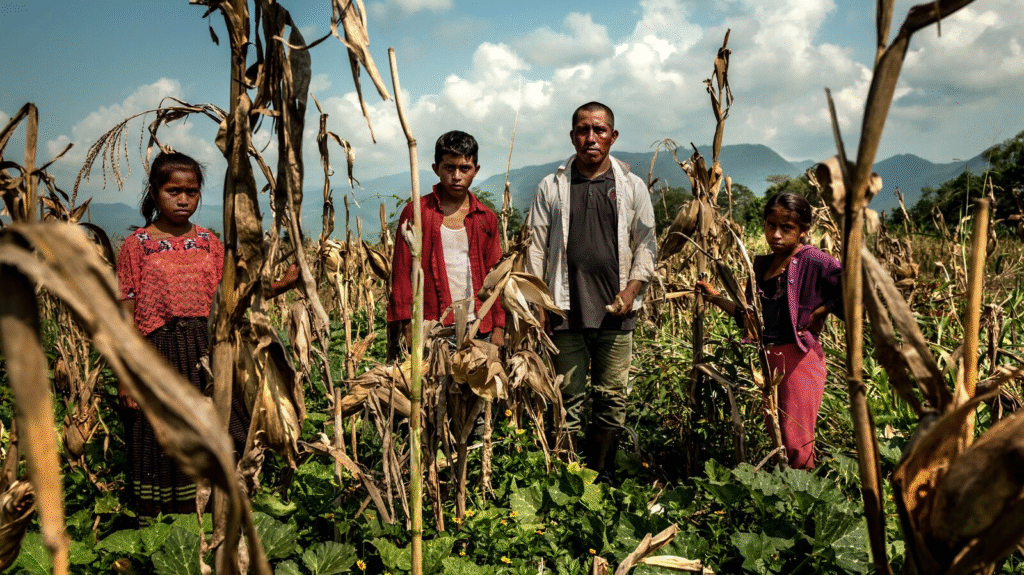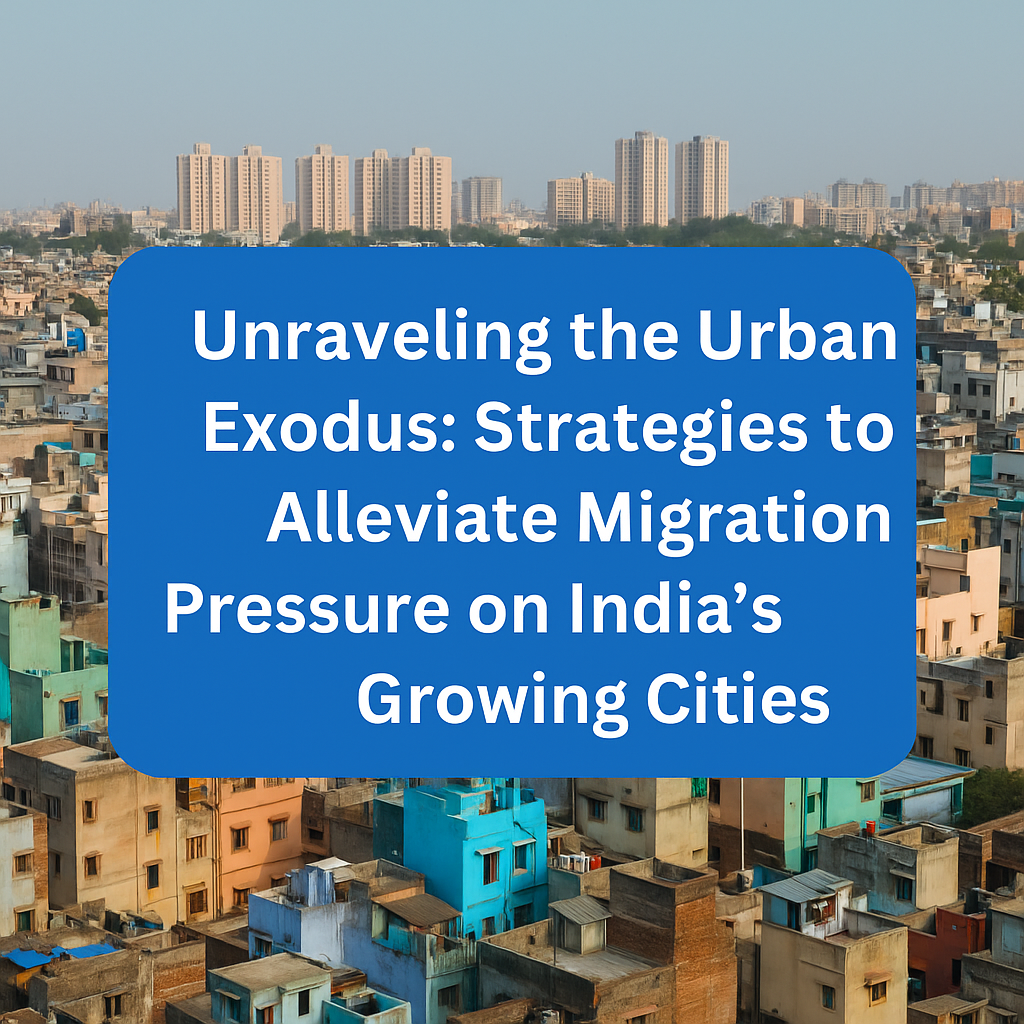
India’s rapid urbanization is a transformative force shaping the nation’s economic and social fabric. However, this surge towards cities has also unleashed one of the most pressing challenges of our times — the overwhelming migration pressure on India’s urban centers. As millions flock to metropolitan hubs seeking improved livelihoods, education, and healthcare, India’s cities are struggling with swelling populations, stressed infrastructure, and growing inequality. Understanding the complex reasons behind this massive urban influx and crafting effective, sustainable solutions is imperative if India is to build livable, prosperous cities for the future.
The Powerful Pull of Cities and the Surge of Migration
For decades, Indian cities have functioned as magnets, drawing people from rural areas driven by aspirations for better income, quality education, and healthcare services. The disparity in opportunities between rural and urban regions is a primary catalyst for this migration. While rural India continues to grapple with inadequate facilities and limited employment options, cities promise, and often deliver, a more hopeful future.
It is estimated that nearly 30-35% of India’s urban population consists of migrants, a staggering figure that highlights the scale of this demographic shift. This influx overwhelms public infrastructure, exacerbating housing shortages, clogging transport networks, and stretching social services thin. Migrants frequently settle in informal or unauthorized colonies, where basic amenities such as sanitation, clean water, and healthcare are insufficient or absent altogether.
The COVID-19 pandemic brought these vulnerabilities to the forefront. The sudden economic shutdown forced millions of migrant workers to return to their native villages, disrupting urban economies and highlighting the fragile safety nets for migrants. This unprecedented reverse migration demonstrated the urgent need for more balanced development strategies that address the root causes of rural-urban migration rather than merely its consequences.
The Persistent Rural-Urban Divide
At the heart of this phenomenon lies the glaring divide between rural and urban India. Agriculture, which remains the primary livelihood for over half of the rural population, faces systemic challenges — fragmented landholdings, climate unpredictability, low mechanization, and limited market access. These issues have stagnated rural incomes, making agriculture an increasingly unviable livelihood for many families.
Adding to this, rural education infrastructure lags behind, resulting in skill deficits among rural youth. Without adequate schooling and vocational training, these young people are often unable to compete for higher-paying jobs, thereby making migration to urban centers the most viable option.
Moreover, rural areas suffer from inadequate healthcare services, forcing families to move to cities in search of better medical facilities. Social factors like caste discrimination and gender biases in rural societies further encourage migration, particularly among marginalized groups seeking anonymity and freedom in the anonymity of the city.
Bridging this rural-urban gap is a colossal task. It calls for comprehensive reforms encompassing agricultural modernization, rural industrialization, education upliftment, and social welfare enhancement. Without addressing these foundational issues, migration to cities will continue to be the preferred, if not the only, choice for millions.
Envisioning Sustainable Urban Infrastructure for Growing Populations
While reducing the causes of migration is vital, it is equally important to prepare cities for inevitable population growth. Building resilient, sustainable urban infrastructure is critical to accommodate migrants without compromising the quality of life for all residents.
A fundamental challenge lies in the provision of affordable housing. The acute shortage drives migrants into slums and informal settlements, often lacking basic sanitation, clean water, and electricity. Scaling up affordable housing projects with inclusive urban planning — integrating transportation, healthcare, and education facilities — can help create dignified living conditions.
Transportation infrastructure is another key area demanding urgent attention. Expanding mass transit systems, promoting non-motorized transport, and improving last-mile connectivity will not only reduce congestion and pollution but also enhance urban accessibility for all income groups.
Healthcare and education infrastructure also need significant expansion to cater to the burgeoning migrant population. Establishing neighborhood primary health centers and schools specifically designed to serve migrant communities will improve their well-being and social integration.
Decentralization of urban governance and increased community participation can also help create cities that are responsive to diverse needs. Migrants must be empowered with political and social inclusion, enabling them to actively shape the cities they inhabit.
Strengthening Economic Opportunities in Rural India to Curb Migration
A cornerstone in managing migration lies in revitalizing rural economies and generating quality employment locally. Moving beyond traditional agriculture to diversify rural livelihoods can stabilize incomes and reduce the compulsion to migrate.
Promoting agro-processing industries, handicrafts, rural manufacturing, and digital entrepreneurship can open new avenues for rural employment. Government schemes like MGNREGA provide essential income support but need to be integrated with skill development initiatives that prepare the rural workforce for contemporary demands.
Developing rural MSMEs with adequate infrastructure such as roads, electricity, and broadband connectivity can stimulate entrepreneurship and local economic growth. Digital technology penetration in villages unlocks opportunities for remote work, e-commerce, telemedicine, and online education, narrowing the urban-rural gap.
Education and vocational training aligned with local industries can enable rural youth to find meaningful employment at home. Strategic collaborations between academia, industries, and government agencies can nurture skill ecosystems responsive to rural realities.
Social and Environmental Dimensions of Migration

Migration is not merely a matter of economics or infrastructure; it carries profound social and environmental implications.
Socially, migrants often face exclusion, discrimination, and lack of access to social protection systems. This marginalization perpetuates urban poverty and increases vulnerability. Inclusive policies guaranteeing migrants’ rights, access to health, education, and legal protection are vital to foster social cohesion.
Environmental challenges also emerge from rapid urban expansion. Informal settlements frequently develop in ecologically sensitive zones prone to flooding or pollution. Urban sprawl leads to the loss of green cover, increased waste generation, and water scarcity, affecting all city dwellers’ quality of life.
Urban planning must integrate environmental sustainability with social equity. Green infrastructure, efficient waste and water management, pollution control, and climate resilience measures should be cornerstones of urban development policies.
Progressive Policy Frameworks and Governance Reforms
Addressing migration pressure requires robust policy frameworks underpinned by coordinated governance.
Efficient collaboration between central, state, and municipal authorities can enable data-driven planning and resource allocation. Urban development policies must emphasize balanced regional growth, encouraging investment in Tier 2 and Tier 3 cities to disperse population and economic activities.
Enhancing transport connectivity between smaller towns and large cities can create a networked urban system that distributes opportunities more evenly.
Strengthening rural governance institutions and empowering Panchayati Raj bodies to execute development projects is crucial to improving rural living standards and curtailing out-migration.
Digital governance tools can improve transparency, streamline service delivery, and enhance citizen participation, reducing bureaucratic hurdles and fostering trust.
The Vital Roles of Civil Society and Private Sector
Civil society organizations are essential in supporting migrants through advocacy, skill training, and social integration. NGOs collaborating with local governments and communities create vital support networks that enable migrants to navigate urban life.
The private sector, especially industries reliant on migrant labor, must embrace socially responsible practices. Investing in worker welfare, safe housing, healthcare, and skill development can stabilize migrant labor forces, improve productivity, and foster goodwill.
Corporate social responsibility (CSR) programs targeted at rural development, urban infrastructure, and social inclusion can complement government initiatives, creating synergies for sustainable development.
Looking Ahead: A Vision for Integrated Urban-Rural Development
India’s urban migration challenge is also an opportunity to rethink and redesign the relationship between cities and rural hinterlands. A holistic approach that simultaneously uplifts rural economies and builds sustainable cities can unlock inclusive growth for all.
By addressing root causes in rural areas and enhancing urban infrastructure and governance, India can ease the relentless migration pressure on its cities. Such a transformation requires coordinated policy action, innovation, and the active participation of governments, civil society, and the private sector.
This is more than an urban planning issue — it is a defining social challenge of our era, shaping the lives of millions and the future of India’s development trajectory. Through vision, commitment, and compassion, India can create a balanced and sustainable urban-rural ecosystem where prosperity and dignity are shared across geographies.

